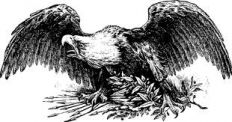Charleston Race Course
Civil War Prison
Charleston, SC
1864
Photo Courtesy of Edward Boots Collection
"Charleston, Club House at the Race Course where Federal prisoners were confined."
The Charleston Race Course, also known as the Planters' Race Course and the Washington Race Course, was a horse racing track located in Charleston, SC near the present day old Citadel. The area encompassing the track is today known as Hampton Park, named for General Wade Hampton and at one time served as the football playing field for the Citadel. The park also once housed a zoo that closed in the 1970s. Today, it is a very beautiful park.
1857 image of the Grandstand and history of the Race Course
The story of the Charleston Race Course Prison really begins at Andersonville, GA. After the fall of Atlanta, there was a fear by the Confederates that Gen. Sherman would come to Andersonville and liberate the thousands of Union prisoners held there. The prisoners needed to be relocated. In late August and early September 1864, the prisoners were told by Captain Wirz that they would all be paroled, except for those who could not walk and were unable to travel. The talk of parole was merely a way to keep the prisoners under control and a way of trying to prevent escape during their relocation. The prisoners being relocated were divided into three groups. One group was sent to Savannah, GA, another to Charleston, SC and the last and smaller group went to Florence, SC. Left behind at Andersonville were those who could not walk and who would be no threat if liberated. Many of these died off rapidly.
A large area was needed to house the newly arrived prisoners in Charleston. Major General Samuel Jones was in charge of the prisoners. The vast majority were held at the Charleston Race Course, which had formerly been used to encamp Confederate troops. Some were also held in the jail yard of the Charleston City Jail and the Workhouse. All of these were holding areas for the prisoners until the building of a new stockade at Florence, SC could be completed. Most, if not all, of the Enlisted prisoners at Charleston (except those that were too ill to move) would eventually be sent to the Florence Stockade.
It must be noted that the health of the prisoners upon their arrival in Charleston was very poor and almost immediately they began to die. Some of these men had been prisoners for several months; some even close to a year. Compared to their stay at Andersonville, Charleston was a welcome change. There were no stockade walls and fresh air would sweep through the camp. However, poor food and the lack of shelter was similar to their Andersonville experience.
Guards were placed at various locations around the track. Bonfires at night were the only means for prevention of escape. Here, too, the deadline was in use, but consisted of a ditch or furrow in the ground.
Not long after the prisoners arrival in Charleston, there was a rapidly deteriorating situation due to the spread of such diseases as Small Pox & Yellow Fever. Due to this situation, and public outcry, 5 to 6,000 of the prisoners were sent to Florence, SC before the completion of the stockade; arriving there on the 14th of September. Others would be sent shortly thereafter.
Even though a majority of the prisoners were sent to Florence, the Race Course Prison remained in use. In December 1864, during a special parole, prisoners from Florence were brought back to Charleston to await flag-of-truce boats. These soldiers were extremely ill upon their arrival and again there would be more deaths at the Race Course.
"Martyrs of the Race Course"
Photo of the Graves of Union Soldiers who died at the race course, Charleston, S.C.
Period drawing of the Race Course Cemetery
At war's end, 257 graves filled the Potter's Field Cemetery near the race course. The majority of these soldiers died as prisoners at the Race Course Prison or hospitals in Charleston, SC. However, several of these soldiers died from wounds or as prisoners at other locations in Charleston.
On May 1st, 1865 an estimated crowd of 9,000 people visited the former site of the Race Course Prison and had a ceremony with the laying of flowers on the graves of the dead. Some historians say that this was the very first "Decoration Day" celebration.
After the war, these Union soldiers were re-interred in the Beaufort National Cemetery, SC. Some of the others who died in Charleston and the surrounding areas were moved to the Florence National Cemetery, SC. Very few Union soldiers who died in Charleston lie in marked graves at either cemetery. Almost all are buried as unknowns. Of those, at least 154 bodies were reburied in Beaufort of those who had died at the race course. Private John Gallagher, Co. K, 101st PA Infantry is the only marked grave at Beaufort who died at the Charleston Race Course.
Thankfully, a marble tablet was erected to the memory of some of these prisoners.
A listing of these men can be found at:
"Potter's Field" Cemetery
